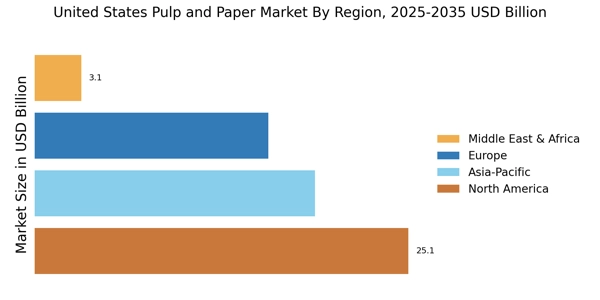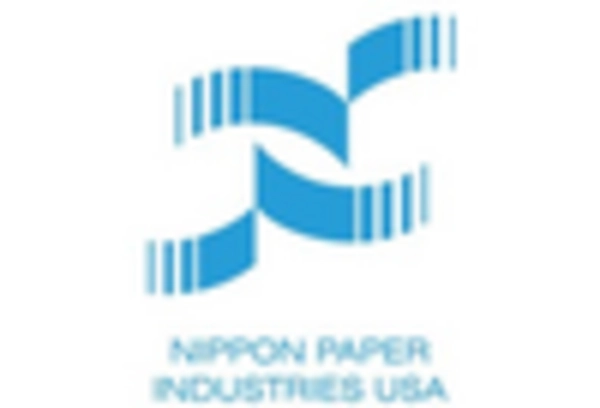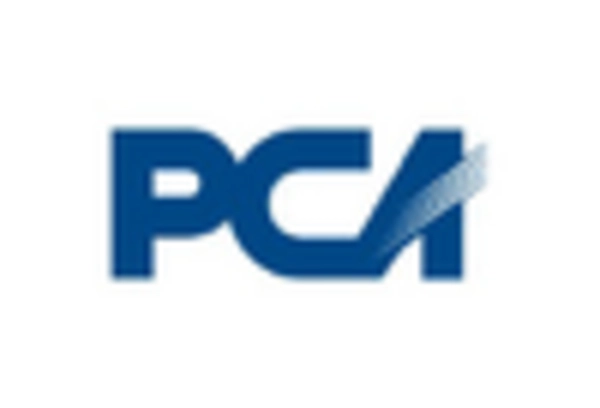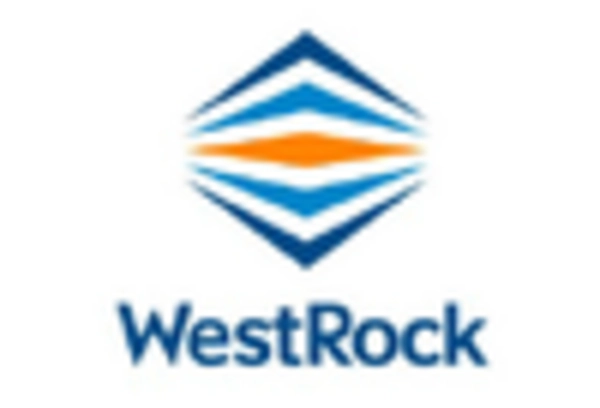Economic Factors
Economic factors are a fundamental driver of the United States Pulp and Paper Market. Fluctuations in raw material prices, particularly wood pulp, can significantly impact production costs and pricing strategies. In 2025, it is anticipated that the price of wood pulp will stabilize, which may lead to improved profit margins for manufacturers. Additionally, economic growth influences demand for paper products across various sectors, including packaging, printing, and hygiene products. As the economy expands, the demand for these products is likely to increase, thereby driving growth in the United States Pulp and Paper Market. Furthermore, trade policies and tariffs can also affect market dynamics, necessitating strategic adjustments by industry players.
Regulatory Compliance
Regulatory compliance is a critical driver in the United States Pulp and Paper Market. Stringent environmental regulations are compelling companies to adopt sustainable practices and reduce emissions. The Environmental Protection Agency (EPA) has established guidelines that govern waste management and emissions, which necessitate significant investments in compliance technologies. In 2023, compliance costs accounted for approximately 10% of total operational expenses for many manufacturers. As regulations continue to evolve, companies that proactively adapt to these changes are likely to gain a competitive edge. This focus on compliance not only ensures legal adherence but also enhances brand reputation, thereby influencing consumer trust and loyalty within the United States Pulp and Paper Market.
Sustainability Initiatives
The United States Pulp and Paper Market is increasingly influenced by sustainability initiatives. Companies are adopting eco-friendly practices to meet consumer demand for sustainable products. This shift is evident as the industry aims to reduce its carbon footprint and enhance recycling efforts. In 2023, approximately 66% of paper consumed in the United States was recycled, indicating a strong commitment to sustainability. Furthermore, regulatory pressures are prompting manufacturers to invest in cleaner technologies and sustainable sourcing of raw materials. As consumers become more environmentally conscious, the demand for sustainably produced paper products is likely to grow, driving innovation and investment in the United States Pulp and Paper Market.
Technological Advancements
Technological advancements play a pivotal role in shaping the United States Pulp and Paper Market. Innovations in production processes, such as digital printing and automation, enhance efficiency and reduce waste. The integration of artificial intelligence and machine learning in manufacturing processes is streamlining operations, leading to cost savings and improved product quality. In 2024, it is projected that the market will witness a 5% increase in productivity due to these technological enhancements. Additionally, advancements in materials science are enabling the development of alternative fibers, which could diversify product offerings and reduce reliance on traditional wood sources. This technological evolution is likely to redefine competitive dynamics within the United States Pulp and Paper Market.
Changing Consumer Preferences
Changing consumer preferences are significantly impacting the United States Pulp and Paper Market. There is a noticeable shift towards digital alternatives, which has led to a decline in demand for traditional paper products. However, this trend is counterbalanced by a growing interest in specialty papers, such as those used for packaging and premium printing. In 2025, the market for packaging paper is expected to grow by 4%, driven by e-commerce and sustainable packaging solutions. Consumers are increasingly seeking products that align with their values, including sustainability and quality. This evolving landscape compels manufacturers to adapt their offerings, thereby influencing production strategies within the United States Pulp and Paper Market.


















Leave a Comment